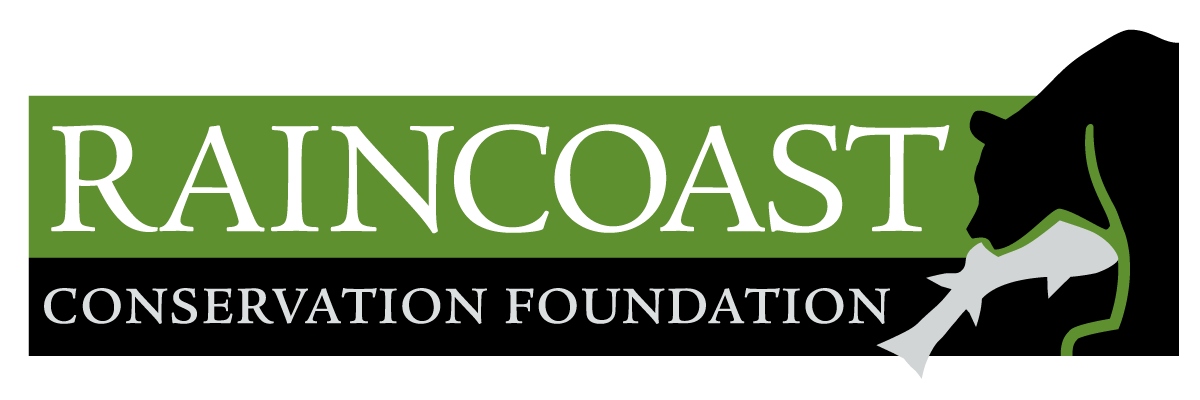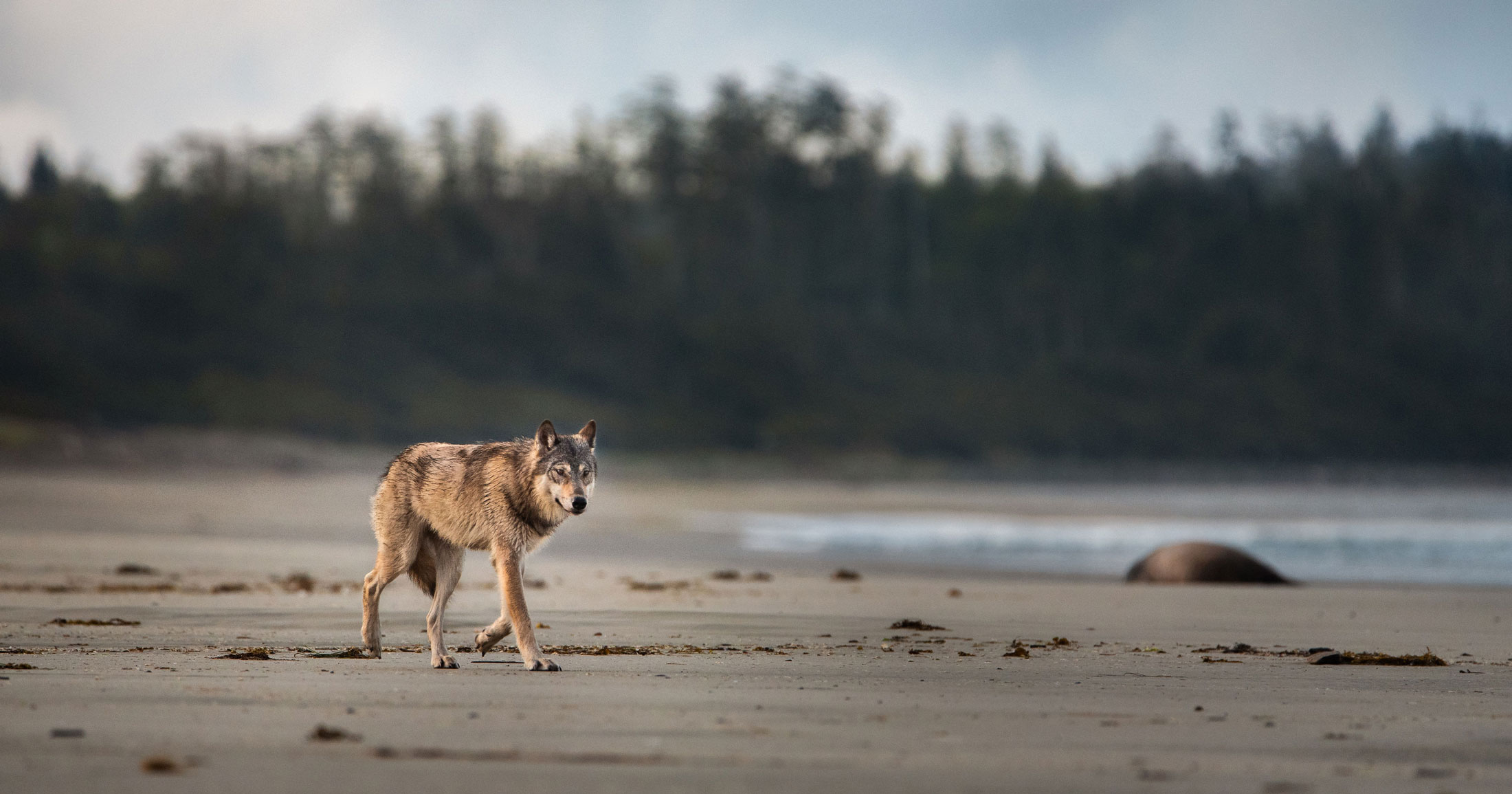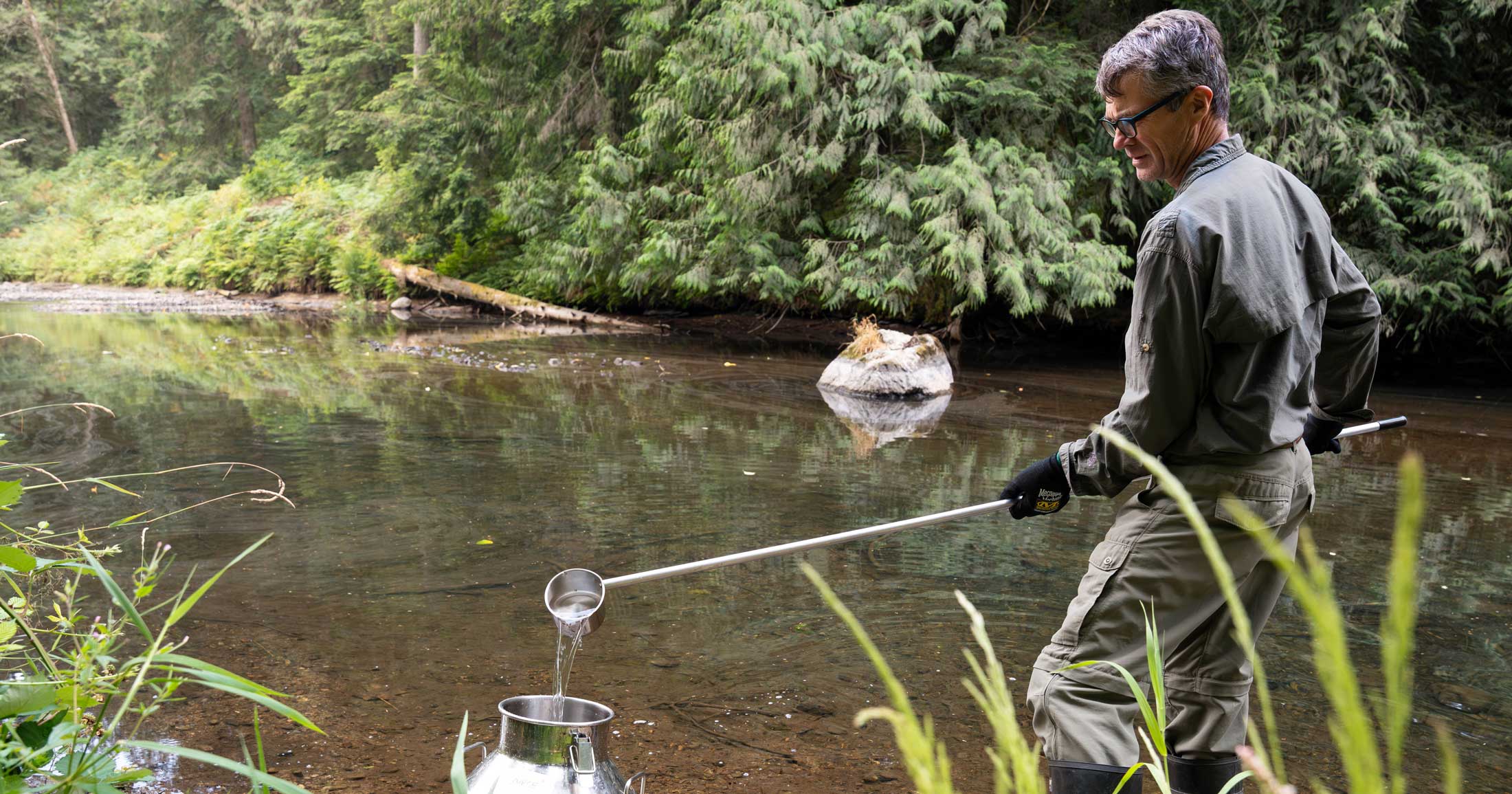Misty MacDuffee
Biologist and Wild Salmon Program Director
Misty MacDuffee is a conservation biologist with a focus on fisheries ecology in salmon ecosystems. For the past 15 years, she has undertaken various types of field, laboratory, technical and conservation assessments in the salmon-bearing watersheds of the BC coast. She has a particular interest in the role of salmon as critical food sources for wildlife and incorporating their needs into salmon management decisions. The application of her work is to implement ecosystem considerations in fisheries management. This often requires engagement with management, dialogue and stakeholder forums that affect fisheries and wildlife policy.

Scientific articles
Chalifour, L., Holt, C., Camaclang, A.E., Bradford, M.J., Dixon, R., Finn, R.J., Hemming, V., Hinch, S.G., Levings, C.D., MacDuffee, M. Scott D. … and Martin. T.G. 2022. Identifying a pathway towards recovery for depleted wild Pacific salmon populations in a large watershed under multiple stressors. Journal of Applied Ecology, 59(9), pp.2212-2226. https://doi.org/10.1111/1365-2664.14239
Kehoe, L.J., J.Lund, L. Chalifour, J.M. Casey, B. Connors, N. Cryer, M.C. Drever, C. Levings, M. MacDuffee, H. McGregor, D.C. Scott, R.G. Vennesland, C.E. Wilkinson, P. Zevit, J.K. Baum and T.G. Martin. 2021. Conservation in heavily urbanized biodiverse regions requires urgent management action and attention to governance. Conservation Science and Practice 3, no. 2 (2021): e310 https://doi.org/10.1111/csp2.310
Chalifour, L., D.C. Scott, M. MacDuffee, S. Stark, J.F. Dower, T.D. Beacham, T.G. Martin, and J.K. Baum. 2020. Chinook salmon exhibit long-term rearing and early marine growth in the Fraser River, B.C., a large urban estuary. Canadian Journal of Fisheries and Aquatic Science DOI: 10.1139/cjfas-2020-0247
Chalifour, L., D.C. Scott, M. MacDuffee, J.C. Iacarella, T.G. Martin and J.K. Baum. 2019. Habitat selectivity by juvenile salmon, resident and migratory species underscores the importance of estuarine habitat mosaics. Mar Ecol Prog Ser Vol. 625: 145–162, https://doi.org/10.3354/meps13064
Gayeski, Nick, Misty MacDuffee, and Jack A. Stanford. 2018. Criteria for a Good Catch: A Conceptual Framework to Guide Sourcing of Sustainable Salmon Fisheries. Facets. 3: 300–314. https://doi.org/10.1139/facets-2016-0078
Lacy, Robert C., R. Williams, E. Ashe, K.C. Balcomb III, L.J. N. Brent, C.W. Clark, D.P. Croft, D.A. Giles, M. MacDuffee and P.C. Paquet. 2017. Evaluating anthropogenic threats to endangered killer whales to inform effective recovery plans. Scientific Reports. 7, Article number: 14119 doi:10.1038/s41598-017-14471-0
Michael H.H. Price, K.K. English, A.G. Rosenberger, M. MacDuffee, and J.D. Reynolds. 2017. Canada’s Wild Salmon Policy: an assessment of conservation progress in British Columbia. Can J. Fish & Aquatic Sci. https://doi.org/10.1139/cjfas-2017-0127
Jarvela Rosenberger, A.L., M.MacDuffee, A.G. J. Rosenberger and Peter S. Ross. 2017. Oil Spills and Marine Mammals in British Columbia, Canada: Development and Application of a Risk-Based Conceptual Framework. Archives of Environmental Contamination and Toxicology 73: 131. https://doi.org/10.1007/s00244-017-0408-7
Darimont, C.T., K. Artelle, H. Bryan, C. Genovali, M. MacDuffee, and P.C. Paquet. 2013. Brown bears, salmon, people: Traveling upstream to a sustainable future. Chapter 14 in Bear Necessities: Rescue, Rehab, Sanctuary and Advocacy. Lisa Kemmerer ed. Brill Press. Boston
Christensen, J.R., M.B. Yunker, M. MacDuffee and P.S. Ross. 2013. Plant consumption by grizzly bears reduces biomagnification of salmon-derived PCBs, PBDEs, and organochlorine pesticides. Env.Tox. Chem. 02/2013
Levi T., C.T. Darimont, M. MacDuffee, M. Mangel, P. Paquet, C.C Wilmers. 2012. Using Grizzly Bears to Assess Harvest-Ecosystem Tradeoffs in Salmon Fisheries. PLoS Biol 10(4)
Darimont, C.T., Bryan, H.M., Carlson, S.M., Hocking, M.D., MacDuffee, M., Paquet, P.C., Price, M.H.H., Reimchen, T.E., Reynolds, J.D., and Wilmers, C.C. 2010. Salmon for terrestrial protected areas. Conservation Letters. 3(6): 379–389
MacDuffee, M. and E. MacIsaac (eds). 2009. Applications of paleolimnology to sockeye salmon nursery lakes and ecosystems in the Pacific Northwest and Alaska: Proceedings of a workshop at the Institute of Ocean Sciences, October 2008. Can. Tech. Rep. Fish. Aquat. Sci. No. 2847
Price, M.H., C.T. Darimont, N.F. Temple and M. MacDuffee. 2008. Ghost Runs: Management and status assessment of Pacific salmon returning to British Columbia’s central and north coasts. Can. J. Fish. Aquat. Sci. Vol 65, No 12, pp. 2712-2718(7)
Christensen, J.R., MacDuffee, M., Yunker, M.B., and Ross, P.S. 2007. Hibernation associated changes in persistent organic pollutants (POP) levels and patterns in British Columbia grizzly bears. Environ.Sci.Technol. 41: 1834 – 1840;
Christensen, J.R., MacDuffee, M., MacDonald, R.W., Whiticar, M. and Ross, P.S. 2005. Persistent Organic Pollutants in British Columbia’s Grizzly Bears: Consequence of Divergent Diet. Environ. Sci. Technol. 39: 6952-6960
Recent articles
A window for survival: Act now to protect Chinook and save Southern Residents
A ‘’whale safe” window can help this endangered population.
Episode 12: Enriching relationships with watersheds and people, with Redd Fish Restoration Society’s Jessica Hutchinson
How process restoration is banishing band-aid solutions (and commitment issues).
Together, let’s rewrite the story of wolves in BC
Protecting wolves is about more than one species—it’s about protecting…
What is a watershed?
How can we use the movement of water through the…
Help us keep our programs moving forward, uninterrupted
Why monthly giving is crucial for long-term conservation success.
Episode 11: Communicating the “why care?”, the importance of listening and community empowerment with Tom Rutherford
“My theory is there’s not enough of us who are…






